 In the early 1900s, members of the Passamaquoddy and Penobscot tribes spent summers at what was known as Indian Canoe Landing in Kennebunkport, near the mouth of the Kennebunk River on land owned by John S. Peabody (3rd from the right in the hat and three-piece suit). There they demonstrated birchbark canoe building, and sold canoes and baskets to tourists. They stopped coming in the 1920s when motorboats became more popular. Photo courtesy Kennebunkport Historical Society from the 1901 book Rope’s Ends by Annie Peabody Brooks
In the early 1900s, members of the Passamaquoddy and Penobscot tribes spent summers at what was known as Indian Canoe Landing in Kennebunkport, near the mouth of the Kennebunk River on land owned by John S. Peabody (3rd from the right in the hat and three-piece suit). There they demonstrated birchbark canoe building, and sold canoes and baskets to tourists. They stopped coming in the 1920s when motorboats became more popular. Photo courtesy Kennebunkport Historical Society from the 1901 book Rope’s Ends by Annie Peabody Brooks
Canoes became exceptionally popular in some parts of North America during the late 1800s and early 1900s. Local canoeing ecosystems included multiple liveries, canoe clubs, and builders. People and ideas moved fluidly between these different organizations, which meant that canoes from a variety of builders in the same area can look quite similar. It can be exceptionally difficult to distinguish the canoes of one early builder from those of another without a manufacturer’s tag.
The Charles River area outside of Boston is one of the best-known examples of an early canoeing community. In Maine, Kennebunkport is another area where canoeing became increasingly popular, leading to the growth of builders and clubs. These builders included Joseph T. Ranco, a Native American who is one of the few Maine canoe builders known to have worked in both bark and canvas during the late 1800s and early 1900s.
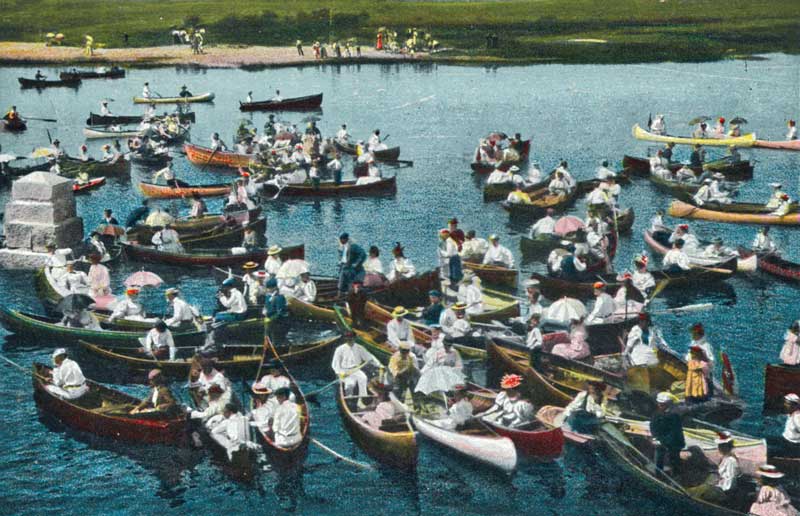 The Kennebunk River Club was designed by architect Frederick Stickney and built in 1890 by a group of energetic summer people in response to the growing popularity of canoes and boating. The club, which still exists, hosted annual canoe races, water sport competitions, and a carnival day that included a festive parade of boats (as seen in image above).
The Kennebunk River Club was designed by architect Frederick Stickney and built in 1890 by a group of energetic summer people in response to the growing popularity of canoes and boating. The club, which still exists, hosted annual canoe races, water sport competitions, and a carnival day that included a festive parade of boats (as seen in image above). 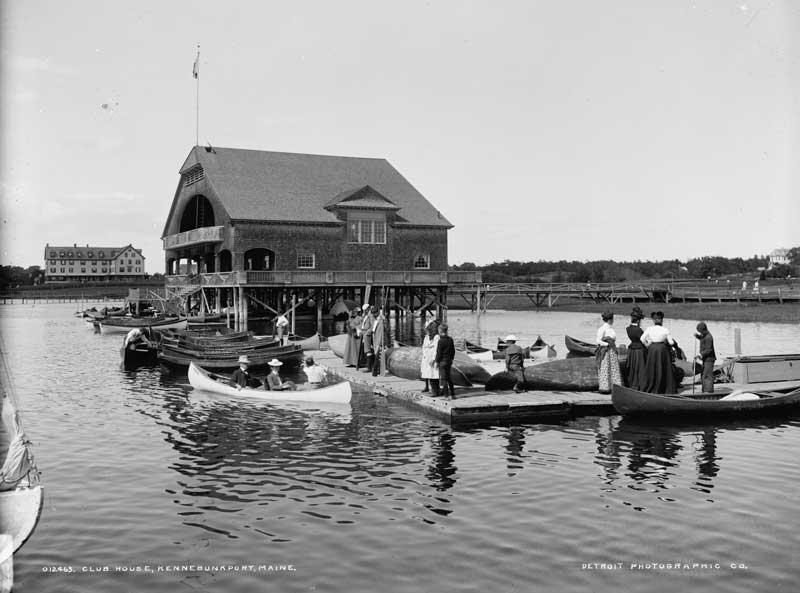
When tourists and rusticators began arriving in Kennebunk during the 1800s, they sought out Native American crafts, canoes, and guiding services. Many Native Americans responded by moving to seasonal village camps there, including Augustin “Tuestor” Ranco with his wife Louisa “Tomekin” Polis and their children, including Joseph T. Ranco.
The seasonal Native American village was torn down in the 1930s, according to a Kennebunk Star article in 1936. “They once occupied land on both sides of Ocean Avenue,” the article noted. But in the late 1800s and early 1900s Kennebunk was a hive of canoe-building activity.
 Joseph Ranco ran this ad in the Kennebunkport summer tourist newspaper between 1895-1905. The image in the ad shows his shop and in the background the tents and wooden sheds that were part of the Native American encampment. Photo Courtesy Kennebunkport Historical SocietyThe Ranco family first traveled from the Old Town area to spend the summer in Kennebunk in 1878. Joseph Ranco was born in April 1865 and died in April 1943, according to his obituary and census records. His father, Tuester, was probably the canoe builder listed in the 1887 issue of the New England Business Directory as T. Ranco in Olamon, Greenbush, Maine, near Old Town, which means that Joseph Ranco could have learned to build canoes from his father.
Joseph Ranco ran this ad in the Kennebunkport summer tourist newspaper between 1895-1905. The image in the ad shows his shop and in the background the tents and wooden sheds that were part of the Native American encampment. Photo Courtesy Kennebunkport Historical SocietyThe Ranco family first traveled from the Old Town area to spend the summer in Kennebunk in 1878. Joseph Ranco was born in April 1865 and died in April 1943, according to his obituary and census records. His father, Tuester, was probably the canoe builder listed in the 1887 issue of the New England Business Directory as T. Ranco in Olamon, Greenbush, Maine, near Old Town, which means that Joseph Ranco could have learned to build canoes from his father.
The younger Ranco was first listed as a canoe builder in the Old Town newspaper on April 28, 1888, in an article noting that “Joseph Ranco has fitted up a shop on the Island where he intends to make to order all kinds of birch bark and canvass canoes.” The same paper reported on August 18, 1888, that “We received an order for business cards this week from Mr. Joseph Ranco who is summering at Kennebunkport, Me.”
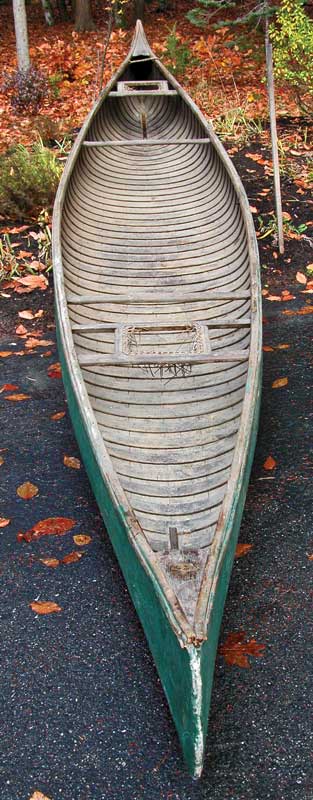 Joseph Ranco probably helped design and build this canoe for the Indian Old Town Canoe Company in 1901. Photo courtesy Benson GrayCanoes built by Ranco and others in the Kennebunkport area feature heart-shaped decks, spruce root or cane wraps on the deck tips, removable bow seats, three closely spaced ribs at the end of the stems on each end, and a planking pattern that flares out to fill the turn of the bilge after the tenth rib, counting from each end. Some other builder’s patterns flare like this but often not from the same place. It is also interesting to note that in canoes built at the Old Town canoe company this pattern usually started from the tenth rib. Canoes from other builders in the Kennebunk area that seem to share these characteristics including craft built by John R. Williams, Owen Stevens, Cleveland Trott, D. H. Heckman, M. B. Seavey, George Chick, B. Warner, Clement L. Clark, H. Boles, John Peabody, and others.
Joseph Ranco probably helped design and build this canoe for the Indian Old Town Canoe Company in 1901. Photo courtesy Benson GrayCanoes built by Ranco and others in the Kennebunkport area feature heart-shaped decks, spruce root or cane wraps on the deck tips, removable bow seats, three closely spaced ribs at the end of the stems on each end, and a planking pattern that flares out to fill the turn of the bilge after the tenth rib, counting from each end. Some other builder’s patterns flare like this but often not from the same place. It is also interesting to note that in canoes built at the Old Town canoe company this pattern usually started from the tenth rib. Canoes from other builders in the Kennebunk area that seem to share these characteristics including craft built by John R. Williams, Owen Stevens, Cleveland Trott, D. H. Heckman, M. B. Seavey, George Chick, B. Warner, Clement L. Clark, H. Boles, John Peabody, and others.
Ranco likely was one of the first employees of the Indian Old Town Canoe Company, which was formed in 1900. The 1976 Profiles of Maine book by Lynn Franklin quotes his nephew Nick Ranco: “It was Joe Ranco, my uncle, who founded the Old Town Canoe Company. He worked with a man named Wickett and they had a small shop, just big enough to hold one canoe. They sawed out their cedar ribs and planking themselves.”
The Old Town build record for a 34-foot war canoe with serial number 4034 from 1906 has notes on the back indicating that Joe Ranco and A. Wickett spent a long time building it. The Indian Old Town Canoe Company catalog identified the company’s I. F. model as being “planned by one of our Indian workmen.” That likely was a reference to Ranco, since he was one of the most experienced Native American canoe builders and designers in that area at that time. The initials may have stood for Indian Fishing canoe. This model is still being built and sold today as Old Town’s Guide model.
Ranco seems to have built for at least one other builder, the Penobscot Canoe Company, which was started in 1915 by Alfred Wickett, the same Wickett who had been employed at Old Town and worked with Ranco. The 1917 Penobscot Canoe Company catalog mentions Ranco. “Mr. Joseph Ranco, the most experienced Indian canoe builder of the Penobscot tribe, worked out and sold to us a remarkably simple yet effective type of canoe construction,” the catalogue states. The company sold the canoe as the “NOTACRACK” model, which included an unusual spearhead deck and a unique method of double planking, and was patented in 1916 under Ranco’s name and assigned U. S. patent number 1,195,727.
 Rails that extend past the stem on an Old Town canoe indicate one that was built before 1905. It is unusual to find one with the original canvas intact. This is the oldest one that is currently known to exist. Photo courtesy Benson Gray
Rails that extend past the stem on an Old Town canoe indicate one that was built before 1905. It is unusual to find one with the original canvas intact. This is the oldest one that is currently known to exist. Photo courtesy Benson Gray
The Penobscot Canoe Company went under in 1923 when its factory burned down. And Ranco seems to have stopped building canoes commercially around the same time. He listed his profession in the 1920 census as a Teamster in the trucking business. He also was known as Chief Tomekin, a name that came from his mother’s family, when he dressed in native clothing for photographers.
After Ranco died in 1943, his obituary took note of his canoe-building past. “He was skilled in the use of tools, a master builder of canoes. After many years spent in the construction of birchen craft, he conceived the idea of using canvas in place of birch or bark, and was the builder of the first canvas-covered canoe. He was the designer of one type of canoe constructed by the Old Town Canoe Company, of which he was for many years a valued employee.”
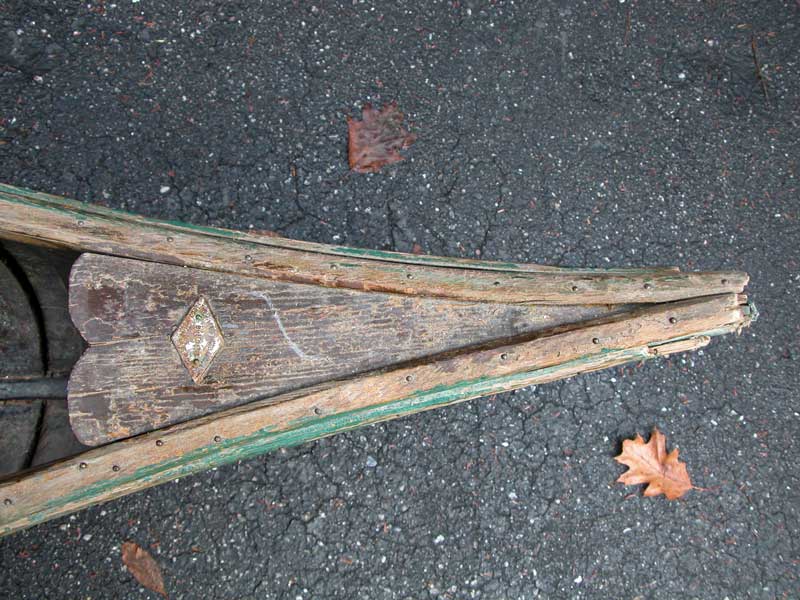 The diamond shaped brass tag (above) confirms that this canoe is from the Indian Old Town Canoe Company. Photo courtesy Benson Gray
The diamond shaped brass tag (above) confirms that this canoe is from the Indian Old Town Canoe Company. Photo courtesy Benson Gray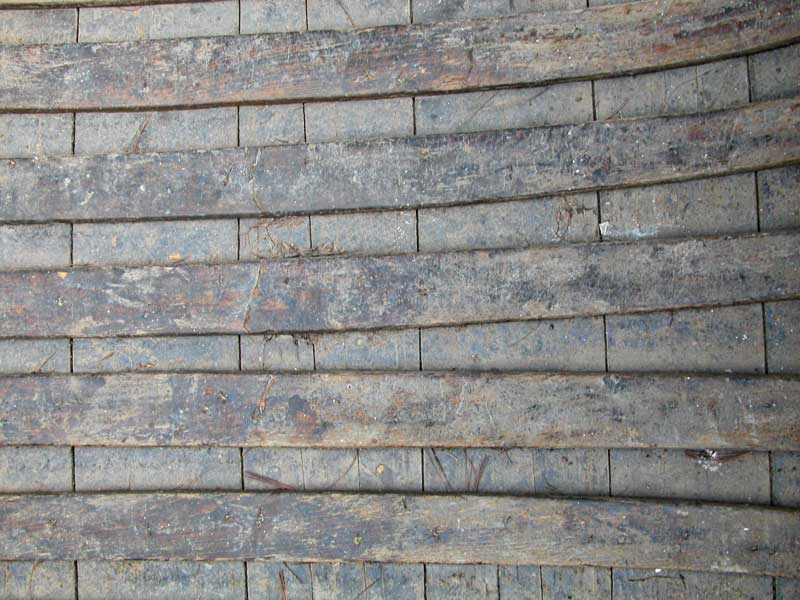 Photo courtesy Benson Gray
Photo courtesy Benson Gray
Benson Gray grew up in Old Town and has always loved old canoes. His work with computers, and an interest in the history of canoe builders, has led to scanning Old Town Canoe Company catalogs. His largest project with the Wooden Canoe Heritage Association was to compile the Old Town, Carleton, and Kennebec build records, along with building an archive of the Wooden Canoe Journals. His great-grandfather was one of the founders of the Old Town Canoe Company.






